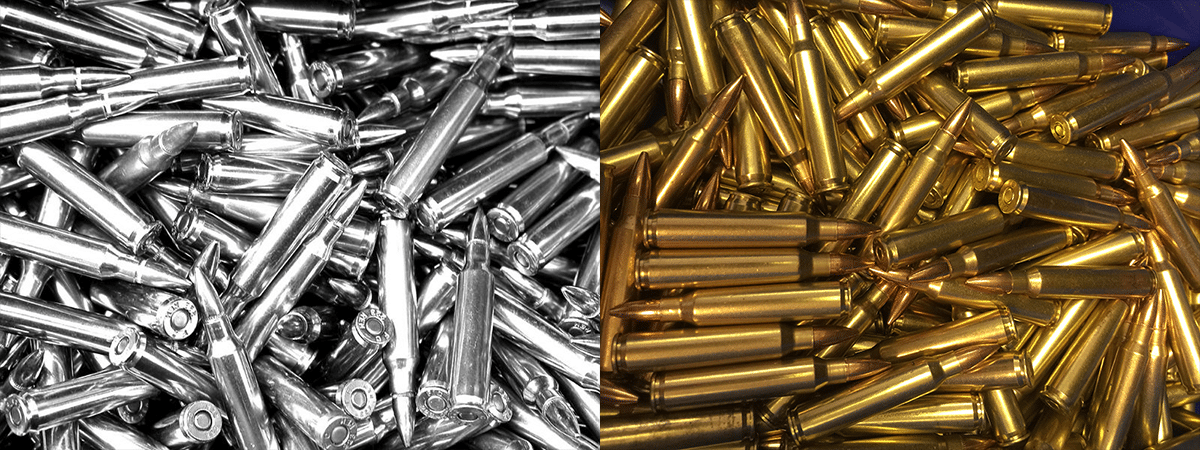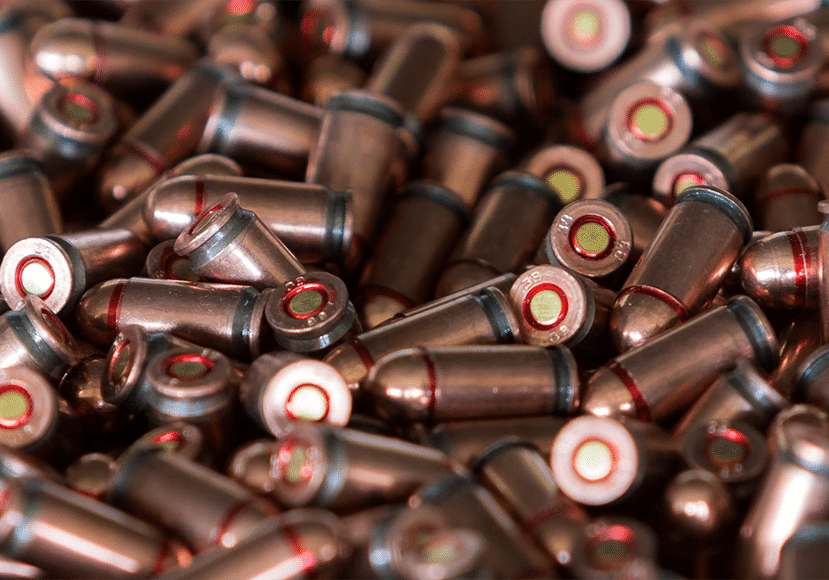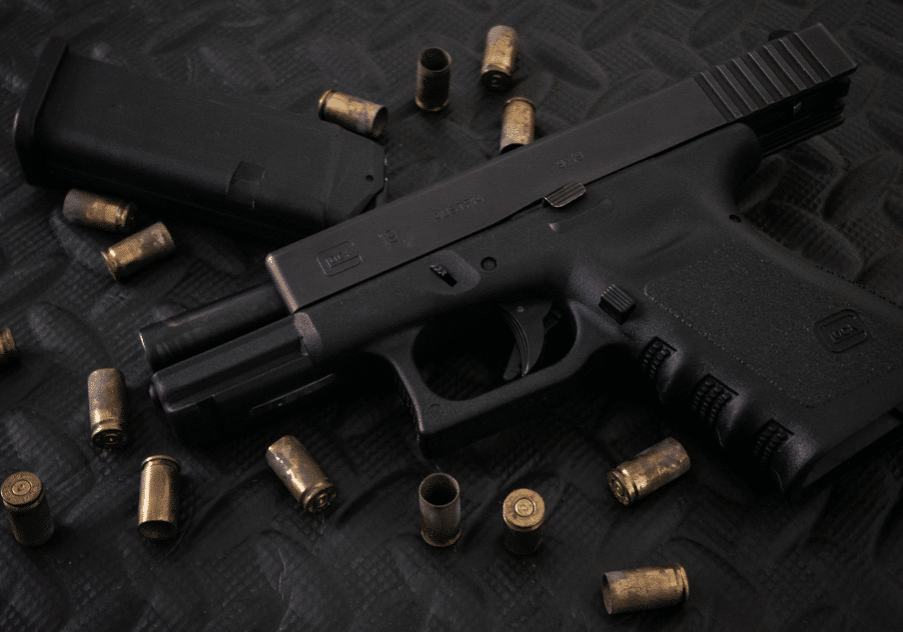Steel vs Brass Case Ammo | Everything You Need to Know

Today, we will be diving into one of the age-old debates of the firearm community by discussing steel vs brass case ammo. Both come with their advantages and tradeoffs, all of which we will be exploring here. There are a lot of conflicting opinions on this subject, but hopefully, by the end of this article, we will have a much clearer picture of the differences between the two. Let’s get started!
Common Arguments for Brass Ammo
The steel vs brass ammo debate goes like this: Steel ammo is considerably more affordable than brass; however, long-term use of steel cases is reported to cause more damage to your gun. It isn’t entirely clear how much added wear steel ammo can cause, and the question is whether or not the damage done by steel ammo outweighs its lower costs.
Brass ammo, on the other hand, is considered to have a cleaner burn and is less likely to malfunction; however, there might be other factors that contribute to this, such as the composition of the primers and powders being used.

1000 rounds of brass 5.56 I (the editor) just received
Brass is considered to offer better overall performance than steel for several reasons: It’s a more malleable metal, which helps it respond better to pressure put on the case when the gunpowder expands. Brass, unlike steel, will expand along with the gunpowder to create a better pressure seal against the chamber. This ensures that gas isn’t wasted or redirected, which can cause excess blowback. Steel’s inability to expand like brass translates to a poorer seal and can cause more internal damage while leaving the barrel.
Brass also is less susceptible to the elements. It doesn’t oxidize at the same rate as steel, so it’s more corrosion resistant. To protect against bullet decay, steel ammo often is covered in a thick lacquer or protective grease that can leave dirty residue behind in the barrel, which can increase the likelihood of malfunction.
Suggested Reading: How Long Does Ammo Last and How to Store it For Max Shelf Life
Last but not least, brass ammunition tends to be treated with greater care and is usually subject to higher quality standards from the manufacturer. It also tends to be packed with higher-grade primers.
To recap, brass is generally preferred over steel for the following reasons:
- Brass causes less wear on the firearm, specifically on the extractor, ejector, and barrel.
- It’s more malleable, which allows it to expand and create a tighter seal on the chamber.
- Brass is more durable and has greater rust resistance.
- Brass is cleaner and doesn’t leave as much residue behind in the gun, leading to smoother travel down the chamber.
- Brass ammunition is generally held to higher quality standards from the manufacturer.
Some people will never, under any circumstance, use steel ammo; others take a more nuanced position depending on the gun/barrel being used or the specific brand of steel ammo being purchased. It’s easy to see how uncertain any opinion can be on this subject, particularly without hard scientific data.
Be Sure to Check Out the Best Places to Buy Ammo Online.
Possible Advantages of Steel Ammo
The case for brass ammunition is certainly strong. Under some conditions, however, there are advantages to steel ammo that are worth mentioning.
Russian Steel
While most Western rifles are built for brass cartridges, this isn’t necessarily the case for rifles around the world. Russian and Eastern European rifles like the AK-47, the SKS, and the FAL, for example, are actually designed for steel ammunition.

Mikhail Kalashnikov, inventor of the AK-47
Brass ammunition typically extracts better than steel, but the rifles listed above apply such a high level of force during extraction that they’ve been known to rip the heads off of brass cases. Numerous other rough foreign rifles, like the HK91/G3/CETME .308, will do the same thing. Steel ammo, meanwhile, is better able to withstand the force generated from these rifles.
So just keep in mind that many of the foreign rifles with looser tolerances typically generate levels of force that steel ammo is better adapted to withstand. This is especially the case with older surplus guns or guns made from imported parts kits. Can you use brass ammo with an AK-47? Sure, but it might not be as high performing as steel.
Money Talks
Steel ammunition is cheaper than brass—and by no small margin. For example, you will generally save about $100 per thousand rounds when purchasing steel .223 ammo. That said, if we are using rifles like the AR-15 or AR-10, we need to take into account that we will need to be replacing parts like the barrel and extractor sooner than if we used brass ammo. So the question is, does the savings on buying steel ammo make-up for having to buy replacement parts for your firearm sooner?
To answer this question, I’m going to reference a study carried out by online ammunition retailer Lucky Gunner. I’ll be expanding more on the Lucky Gunner study in the following section, but to quickly summarize, in 2013, Lucky Gunner carried out an extensive torture test using AR-15 rifles with 10,000 rounds of Federal brass cartridges and compared it to three different brands of steel cartridges (Wolf, Brown Bear, Tulla). As expected, Federal outperformed its steel-cased counterparts, but the conclusions made by Lucky Gunner were that from a strictly financial perspective, you will still save more buying steel ammo, even if you wind up needing to replace parts sooner:
“[For most people] the increased cost of brass cased ammunition isn’t worth it – after all, the Wolf and Brown Bear ammo had very few malfunctions, all things considered. Plus, let’s be honest – in all likelihood, most people will never shoot 10,000 rounds through their AR-15. As a company we would be excited if they did, but the use these rifles saw was far beyond what is likely to be encountered in the real world. So, for many consumers, this test will be justification that buying steel cased ammunition is a sensible decision. In many cases, it is.”
The article continues:
“The difference in price between brass and steel cased (more specifically, copper jacketed and bimetal jacketed) ammunition means that you’ll have plenty of savings with which to buy new barrels – even if you shoot so fast that you replace them every 4,000 rounds…. Brass ammunition was calculated at $130 per thousand higher than steel and replacement barrels at $250 apiece.”
I found this fascinating, and I think the information provided by Lucky Gunner is tremendously valuable to an average range-goer. I’d still recommend running your own tests (1,000 rounds) on your own gun before fully committing to steel ammo. But I think the information provided by Lucky Gunner suggests that there is little reason to be a purist about using brass ammo unless you are a competitive shooter or you have a high-end/rare firearm that justifies buying expensive ammunition.
Other Factors to Consider Before Using Steel Ammo
- Do not use steel ammo for hunting. Steel ammo is almost always FMJ and is not suitable for hunting. It’s also illegal in many states. (Note: If you insist on using steel ammo for hunting, some manufacturers like Hornady do make steel hunting ammo, but it isn’t always easy to find.)
- Do not use steel ammo if it will void your manufacturer’s warranty (check your owner’s manual).
- Do not use steel ammo if you frequent a range which prohibits its use.
- Stop using steel ammo if your gun begins to repeatedly malfunction.
Additional Data From the Lucky Gunner Torture Test
Below is additional information collected from the Lucky Gunner torture test study:
- Federal: 10,000 rounds, 0 malfunctions.
- Brown Bear: 10,000 rounds, 9 malfunctions (5 stuck cases, 1 magazine-related failure to feed, 3 failures to fully cycle)
- Wolf: 10,000 rounds, 15 malfunctions (stuck cases)
- Tula: DNF (6,000 rounds in alternate carbine, 3 malfunctions)
- Federal carbine took significantly longer to clean than Brown Bear and Wolf Carbines
- Brown Bear carbine’s gas tube and gas key no longer functioned reliably after 5,000 rounds due to carbon buildup and needed to be replaced.
- Federal carbine maintained acceptable accuracy up to the 10,000-round mark
- Brown Bear and Wolf carbines exhibited significant accuracy loss by 6,000-round mark
- Brown Bear and Wolf carbine’s barrel would have required replacement at 5,000-round mark
- Federal carbine’s barrel exhibited wear after 10,000 rounds but was still serviceable.
- Federal and Wolf carbines' muzzle velocities slowed at a similar rate
- Brown Bear muzzle velocity deteriorated at an expedited rate
- No evidence was found that lacquer coatings melt in the chamber or cause extraction failures
Conclusion
So have we settled the steel vs brass ammo debate once and for all? Unlikely, and honestly, why would we want to? The ongoing debates in the world of firearms are part of the fun of belonging to the community. With that said, I do hope you found this article helpful, and hopefully you have some new ammunition (pun intended) to use in your next steel vs brass ammo debate.
And if you're wondering what type of ammo we use at GunPros, for range practice, we generally use brass-cased ammo for our pistols but are fine using steel ammo for our rifles. However, we do not recommend steel-cased ammo for self-defense due to the increased chance of malfunction.
Have you made your mind up on which type of ammo to buy? Check Out the Best Places to Buy Ammo Here.





